Women reviving Ryukyuan cuisine in Okinawa are bringing back a rich culinary tradition that thrived for over four centuries in the Ryukyu Kingdom. Although much of this unique and healthy cuisine had nearly disappeared, these dedicated women are now working to preserve and share it with the world.
Women Reviving Ryukyuan Cuisine: Reconnecting with Ryukyuan Culinary Roots
You can tell a lot about someone’s health by their tongue,” says Yukie Miyaguni, a Ryukyuan chef and TCM practitioner in Uruma. Before each cooking class, she blends tradition and medicine by using tongue diagnosis to offer dietary advice.
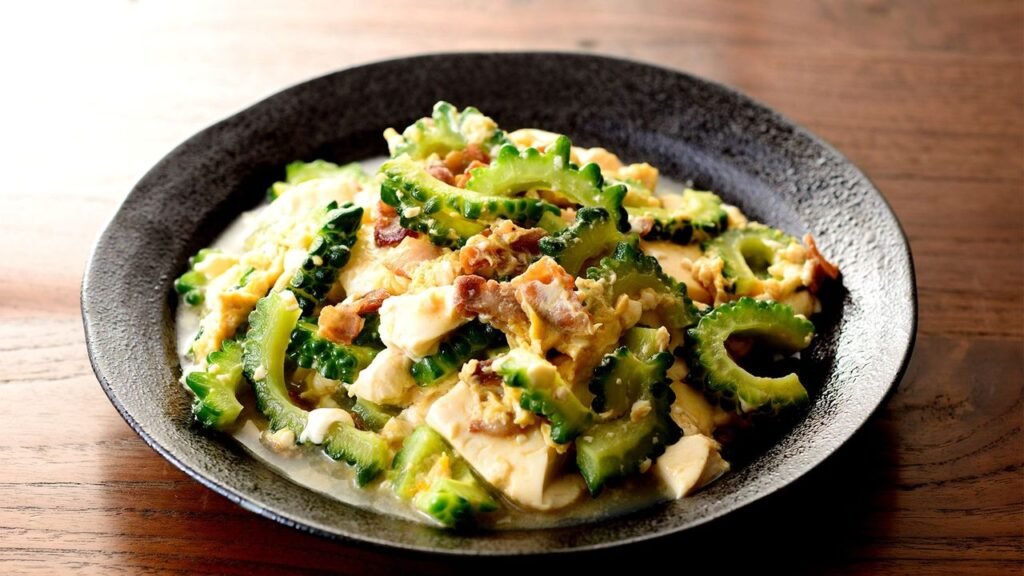
Many visit for the flavors, but leave with insight into Ryukyuan cuisine’s healing power, shaped by 12th-century trade.
The Historical Significance and Revival of Ryukyuan Cuisine
Stretching over 1,100 kilometers from southern Kyushu to northeastern Taiwan, the Ryukyu Islands once flourished under a semi-independent kingdom. From 1429 to 1879, the Ryukyu Kingdom blended local foods with Thai rice, Chinese herbs, and Korean fermentation. Today, women reviving Ryukyuan cuisine are bringing these ancient culinary traditions back to life. These women reviving Ryukyuan cuisine help preserve not only recipes but also the island’s cultural heritage.
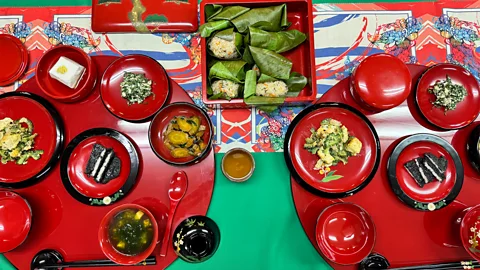
The royal family’s ceremonial meals featured court cuisine known as Ukwanshin Ryori. Presented in ornate Ryukyuan lacquerware called tundabun, these dishes reflected a sophisticated culinary tradition. Recipes included delicacies like hana-ika (squid), minudaru (pork in sesame sauce), and gunbomachi (burdock wrapped in pork).
The Decline and Revival of Ryukyuan Cuisine
After Japan annexed the Ryukyu Islands in 1879, elite cuisine slowly reached ordinary homes.
But World War II and U.S. occupation brought fast food, disrupted food systems, and weakened traditional cooking practices.
Now, women like Miyaguni are leading a culinary revival. By teaching locals and tourists to cook goya champaru, she helps keep Ryukyuan cuisine alive.
Nutrition and Cultural Preservation in the Revival of Ryukyuan Cuisine
“This is the food of our ancestors,” Miyaguni explains as she prepares champaru. Dishes like jimami tofu, slow-cooked agu pork, and umibudo reflect a shared belief in food as medicine, rooted in both TCM and Ryukyuan traditions.
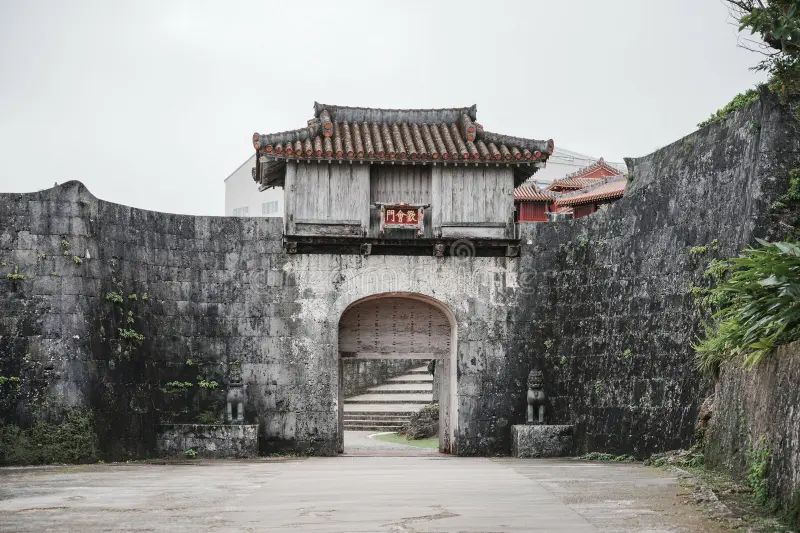
The red tundabun dishes not only highlight the food’s presentation but also symbolize the deep roots of court culture. As she serves chinsuko shortbread and banana leaf-wrapped mung bean rice balls, Miyaguni explains that many Ryukyuan ingredients aid digestion, boost metabolism, and provide antioxidants.
Linking Longevity and Local Ingredients in the Revival of Ryukyuan Cuisine
Once a hospital nutritionist, Miyaguni transitioned to teaching from her home, driven by her belief in the connection between diet and health. Selected in 2018 as a representative of Ryukyuan cuisine by the Okinawa Prefectural Government, she uses ancient texts like Gozen Honzō to guide her teaching. This book, written by a royal physician, details the use and preparation of hundreds of native foods.
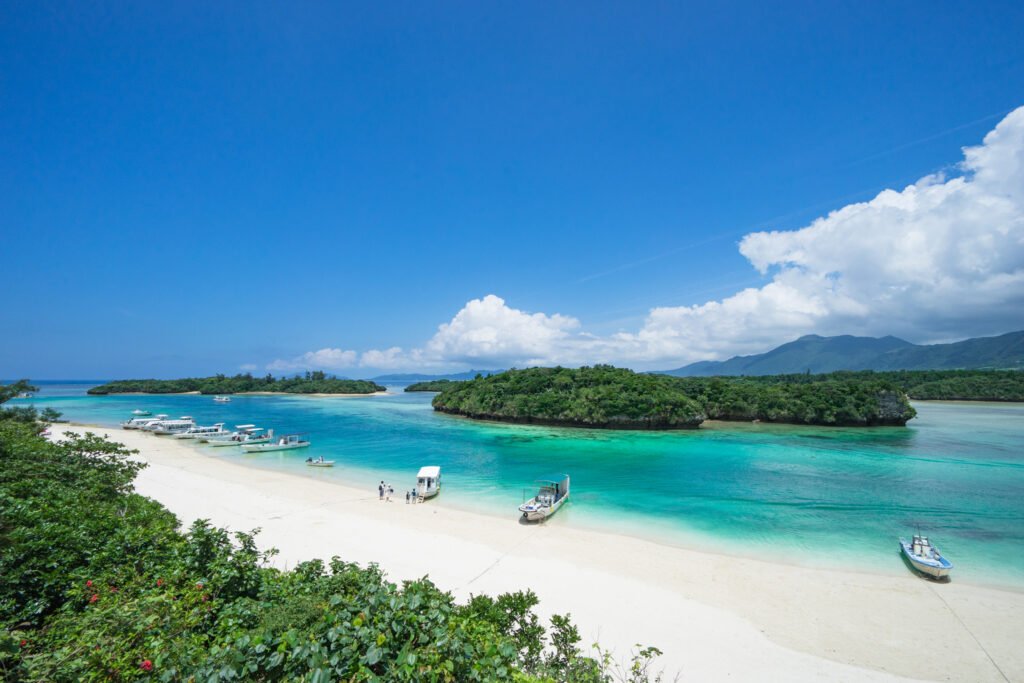
Even today, Miyaguni applies the ancient philosophy of ishoku dogen, which means “medicine and food come from the same source.” This belief promotes the use of seasonal and high-quality local ingredients in everyday meals.
The Influence of Family Traditions on Reviving Ryukyuan Cuisine
Kazumi Kayo, another leading figure in this culinary resurgence, attributes her inspiration to her mother’s cooking. Though once uninterested in traditional dishes, the flavors of her childhood drew her back. Today, she runs Yonner Food Cooking Studio in Naha, offering hands-on experiences starting at the bustling Makishi Public Market.
“Yonnerfood” translates to “slow food” in Okinawan dialect. Kayo’s classes not only teach recipes but also foster a deeper appreciation of local produce and time-honored cooking methods. “The more people know about Ryukyuan cuisine, the more they will value Okinawan culture,” she says.
Government Initiatives to Protect Ryukyuan Culinary Heritage
Concerned by the rise in Western lifestyle diseases and a drop in Okinawa’s once world-leading life expectancy, the prefectural government launched the Ryukyuan Cuisine Masters program in 2016. This initiative certifies chefs and nutritionists in traditional methods and encourages culinary education across the region.
Kayo emphasizes that reviving these foodways isn’t just about nostalgia but about reclaiming a healthy and sustainable way of life.
Community Engagement in Reviving Ryukyuan Cuisine
Beyond the classroom, the revival is spreading through culinary tours and restaurants. The non-profit Ryukyu Cuisine Preservation Association, founded in 2019, works to ensure Ryukyuan food traditions are passed down and recognized nationally.
Tour guide Junko Yokoo’s Blue Zone Okinawa Home Cooking Tour introduces tourists to home chefs like Hiromi Nerome, who cook traditional meals in their own kitchens. These immersive experiences highlight the region’s longevity diet and its unique use of local produce.
Restaurants like Suitenrou and Kuninda in Naha offer diners a mix of folk and court cuisine alongside music and dance, giving them a full sensory experience of Ryukyuan heritage.
Preserving Ryukyuan Identity Through Cuisine
“If Ryukyuan cuisine disappears, we lose the identity of Okinawa,” Miyaguni says firmly. Whether through home kitchens or formal training programs, women like her and Kayo are ensuring that this ancient culinary tradition endures for future generations.
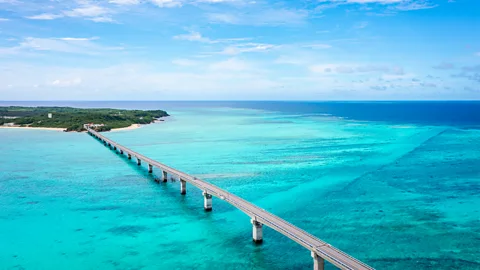
By celebrating the flavors of the Ryukyu Kingdom, these women aren’t just cooking meals—they’re preserving a culture, restoring health, and strengthening community ties, one dish at a time.




